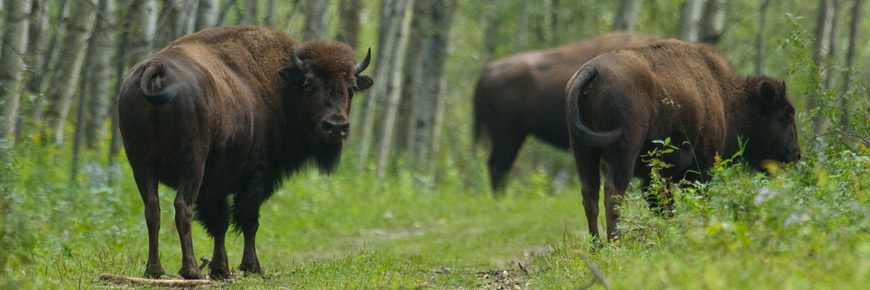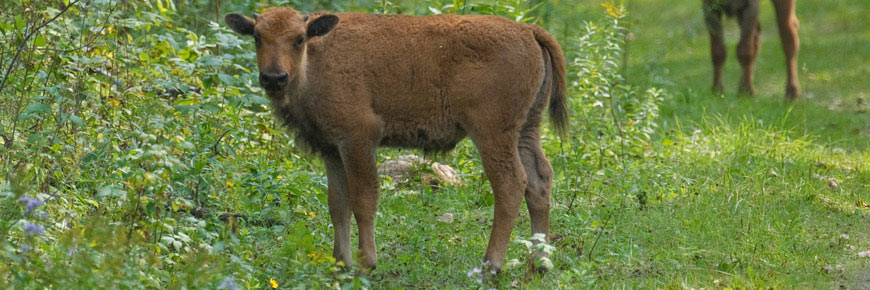
Plains bison facts
Prince Albert National Park
Once numbering in the millions, plains bison were brought to near-extinction in the late 1800’s. In 1906, the Canadian government purchased one of the last remaining plains bison herds. Some of the animals founded the herd at Elk Island National Park, which is the source of most plains bison herds in Canada. Today there are nearly 1,500 mature plains bison in three free-ranging herds in Canada.
Plains bison are ecosystem engineers and a keystone species in Prince Albert National Park. Bison shape the landscape in ways that help other plants and animals, ranging from insects and birds to bears and other ungulates. Grazing, trampling, wallowing, and expelling wastes create a variety of conditions and habitats that benefit other creatures. Insects, animals and native plants depend on this ecosystem engineering.
Bison are vitally important and interconnected with the ways of life of many Indigenous Peoples. Without bison on the landscape, ecosystem and cultural connections are broken.

Characteristics
- Bison are the largest land mammals in North America; bulls can weigh up to 860 kg
- The highest point of the hump is directly over the front legs
- Large thick chaps on the front legs
- Thick drooping beard
- Full neck mane that extends below the chest
- Sharply defined cape line behind the shoulder
- Thick bonnet of hair between the horns
- Calves are often a reddish-orange colour the first 3 months after birth
Plains bison are primarily grazers and historically occurred in grassland and meadow ecosystems, or on the forest fringe. Their historic range in Canada covered an area from the Rocky Mountains in the west, down through southern Manitoba in the east, and from mid-Alberta and Saskatchewan south to the border.
As North America’s largest land mammal, bison have few natural predators. Wolves are the primary predator of bison across the continent. Local knowledge also indicates that bears play a role in predation.
Plains bison are classified as “Threatened” by the Committee On the Status of Endangered Wildlife in Canada (COSEWIC) in the Assessment and Status Report of 2004.
Related links
- Date modified :